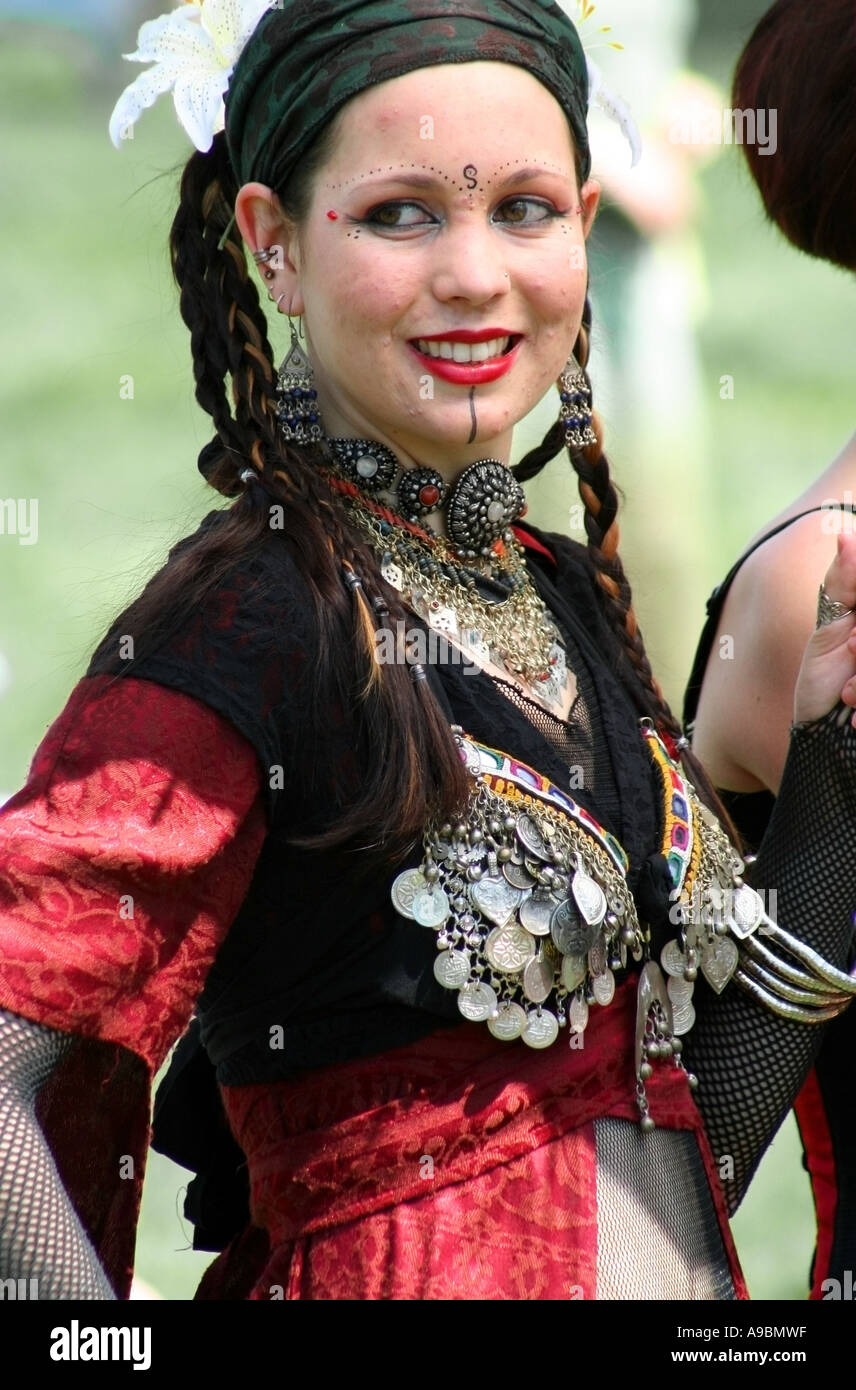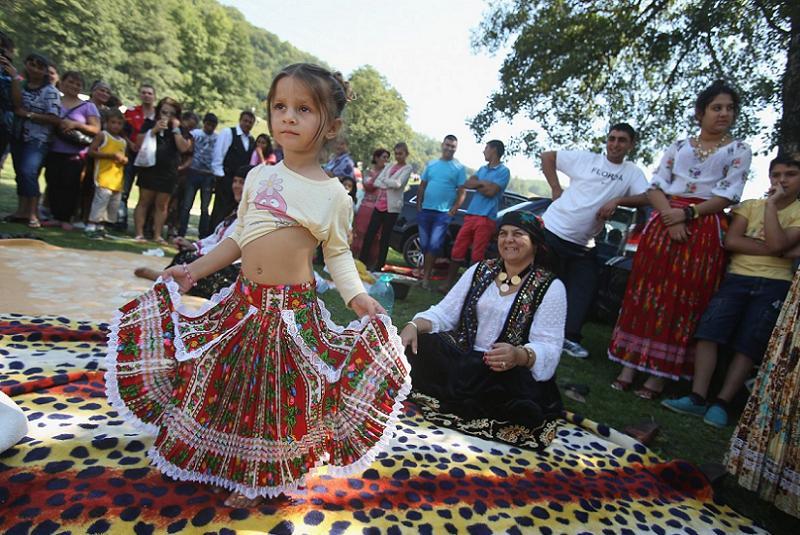Gypsy Rose Lee: The Icon Who Redefined Burlesque
Step into the glittering, often misunderstood world of burlesque, and one name shines brighter than almost any other: Gypsy Rose Lee. More than just a performer, she was a cultural phenomenon, an intellectual, an activist, and an author whose life story captivated millions, inspiring one of Broadway's most beloved musicals. Her journey from a child vaudeville performer to a sophisticated striptease artist who brought respectability to an often-maligned art form is a testament to her unique blend of wit, charm, and intelligence.
Gypsy Rose Lee's narrative is not merely a tale of sequins and spotlights; it's a profound exploration of ambition, family dynamics, and the relentless pursuit of stardom. Her life, meticulously documented in her bestselling memoir, became the foundation for the iconic stage musical "Gypsy," cementing her place in show business legend. This article delves into the extraordinary life and enduring legacy of Gypsy Rose Lee, examining how she transcended the boundaries of burlesque to become one of the 20th century's most important cultural icons.
Table of Contents:
- The Life and Legacy of Gypsy Rose Lee: An Introduction
- Biography: The Early Years of Rose Louise Hovick
- From Vaudeville to Burlesque Stardom: The Birth of Gypsy Rose Lee
- A Class Act: Gypsy Rose Lee's Unique Approach to Striptease
- Beyond the Stage: Activism and Authorship
- The Enduring Legacy: "Gypsy" The Musical and Beyond
- The Cultural Impact of Gypsy Rose Lee
- Conclusion: The Unforgettable Star
The Life and Legacy of Gypsy Rose Lee: An Introduction
The name Gypsy Rose Lee evokes images of glamour, wit, and a certain audacious charm. Born Rose Louise Hovick in Seattle, Washington, her life was destined for the stage from an incredibly young age. Her story, intricately woven with that of her younger sister, June Havoc, and their formidable stage mother, Rose Thompson Hovick, is a quintessential American show business saga. It's a tale of relentless ambition, often at the expense of childhood, and the eventual triumph of individuality. Gypsy Rose Lee wasn't just a stripper; she was an entertainer, an intellectual, and a pioneer who challenged perceptions and carved out a unique space for herself in the annals of entertainment history.
Her remarkable journey, from touring vaudeville circuits as a child to becoming a celebrated burlesque headliner, laid the groundwork for a career that extended far beyond the stage. She captivated audiences not just with her graceful disrobing, but with her sharp wit, her intelligence, and her ability to engage in sophisticated banter. This unique blend allowed her to transcend the typical perception of a burlesque performer, bringing an unprecedented level of respectability to the art form. Her influence was so profound that her life story continues to resonate, particularly through the enduring success of the musical inspired by her autobiography.
Biography: The Early Years of Rose Louise Hovick
Rose Louise Hovick's life began in Seattle, Washington, but her childhood was anything but conventional. From the tender age of five, she, alongside her younger sister, June Havoc, was thrust into the demanding world of vaudeville by their ambitious and often overwhelming mother, Rose Thompson Hovick. This early immersion in show business meant a life on the road, performing in countless venues, from small-town theatres to bustling city stages. These formative years, marked by constant travel, rigorous training, and the relentless pursuit of fame by their mother, laid the foundation for the resilience and adaptability that would define Gypsy Rose Lee's career.
- Sophie Rain Leaked Video
- Small Bar
- One Man One Jar
- Gavin Casalegno Movies And Tv Shows
- Indian Merchant Chambers
The memoir, "Gypsy: A Memoir," published in 1957, offers a poignant and often humorous look at these early days. It details the challenges, the eccentricities of vaudeville life, and the complex relationship with her mother, whose unwavering determination to make her daughters stars became legendary. This period, though difficult, honed Louise's performance skills and her understanding of audience engagement, even if she wasn't initially the star her mother envisioned. It was a crucible that forged the unique performer she would later become, setting the stage for her eventual transformation into the iconic Gypsy Rose Lee.
Personal Data: Gypsy Rose Lee
| Full Name | Rose Louise Hovick |
| Born | January 9, 1911 |
| Birthplace | Seattle, Washington, U.S. |
| Died | April 26, 1970 (aged 59) |
| Known For | Iconic Burlesque Striptease Artist, Author, Actress, Political Activist |
| Spouse(s) | Robert Mizzy (m. 1937–1941), William Alexander Kirkland (m. 1942–1944), Julio De Diego (m. 1947–1951) |
| Child(ren) | Erik Lee Preminger |
| Notable Works | "Gypsy: A Memoir" (1957), "The G-String Murders" (1941), "Mother Finds a Body" (1942) |
| Cultural Impact | Subject of the 1959 Broadway musical "Gypsy" and its film adaptations |
From Vaudeville to Burlesque Stardom: The Birth of Gypsy Rose Lee
The transition from child vaudeville act to burlesque star was not a planned trajectory for Rose Louise Hovick, but rather an accidental pivot that would define her career. When vaudeville began to decline, the opportunities for acts like the "Dainty June and Her Newsboys" (starring her sister June) dwindled. It was during this period of uncertainty that an unexpected opportunity arose in burlesque. Initially, Louise filled in for a performer who failed to appear, and thus, Gypsy Rose Lee was born. This serendipitous turn of events marked the beginning of her ascent to fame, transforming her from a supporting act to a captivating headliner.
What set Gypsy Rose Lee apart from other burlesque performers was not just her physical beauty, but her unique approach to the art of the striptease. She understood that true allure lay not just in the reveal, but in the anticipation, the humor, and the connection with the audience. Her performances became renowned for their sophisticated wit, her playful banter with the crowd, and her unhurried, elegant disrobing. She turned the act into a theatrical experience, engaging her audience with clever commentary and a charming persona. This intellectual approach to burlesque quickly garnered attention, distinguishing her in a crowded field and paving the way for her widespread recognition. Columnists like Walter Winchell raved about her wit and intellectual aspirations, further cementing her reputation as more than just another burlesque star.
A Class Act: Gypsy Rose Lee's Unique Approach to Striptease
Gypsy Rose Lee single-handedly redefined burlesque, elevating it from a perceived lowbrow entertainment to an art form that commanded respect and admiration. Her secret lay in her "classy and witty striptease artist" persona. Unlike her contemporaries who often relied on overt sexuality, Gypsy Rose Lee mastered the art of suggestion and sophisticated allure. She understood that the power of her performance was in the tease, the reveal, and the narrative she wove around her act. Her performances were characterized by a deliberate slowness, an engaging monologue, and a captivating stage presence that kept audiences spellbound.
She brought respectability to the stripping art form by infusing it with intelligence and humor. Her acts were less about nudity and more about performance art, featuring intricate costumes, clever props, and a running commentary that showcased her sharp intellect. She never fully disrobed, always leaving something to the imagination, which only heightened her mystique. This approach allowed her to appeal to a broader audience, attracting not just the usual burlesque patrons but also intellectuals, artists, and even socialites. Life.com, in celebrating her career, featured pictures by George Skadding, a photographer known for presidents, highlighting the unusual and significant stature Gypsy Rose Lee had achieved, transcending the typical perception of burlesque stars. Her ability to charm and engage, coupled with her dignified demeanor, ensured that Gypsy Rose Lee became a household name, synonymous with wit and elegance in an unexpected arena.
Beyond the Stage: Activism and Authorship
Gypsy Rose Lee was far more than just a burlesque queen; she was a multifaceted personality who ventured into various fields, leaving an indelible mark as an author, actress, and even a political activist. Her intelligence and charisma extended beyond the footlights, allowing her to pursue passions that showcased her depth and commitment to social causes. When she first arrived in Hollywood, she became a vocal political activist, openly supporting labor unions and advocating for the Spanish Loyalists during the Spanish Civil War. This commitment to social justice demonstrated her progressive views and willingness to use her platform for causes she believed in, setting her apart from many entertainers of her time.
Her foray into writing further solidified her reputation as an intellectual. She penned three books, including her acclaimed autobiography, "Gypsy: A Memoir," which became a bestseller and laid the groundwork for her lasting cultural impact. Her literary achievements showcased her keen observational skills, her wit, and her ability to tell a compelling story. Beyond her memoir, she also wrote two mystery novels, "The G-String Murders" (1941) and "Mother Finds a Body" (1942), further demonstrating her versatility and creative range. Gypsy Rose Lee truly embodied the spirit of a modern, independent woman who refused to be confined by societal expectations or professional labels.
A Bestselling Memoir: "Gypsy: A Memoir"
The publication of "Gypsy: A Memoir" in 1957 was a pivotal moment in Gypsy Rose Lee's career and her enduring legacy. This autobiography, a candid and often humorous account of her early life and her experiences in vaudeville and burlesque, quickly became a New York Times bestseller. The book offered readers an intimate look into the chaotic yet captivating world she inhabited, focusing heavily on the larger-than-life character of her aggressive stage mother, Rose Thompson Hovick, and her little sister, June Havoc.
The memoir's success was not just due to its sensational subject matter but also to Gypsy Rose Lee's engaging narrative voice. She presented her true life story in three acts, beginning with her early childhood days touring with her sister. This detailed and personal account resonated deeply with readers, providing insights into the sacrifices and triumphs of a life dedicated to show business. The book's popularity was immense, leading directly to its adaptation into the iconic 1959 Broadway musical, "Gypsy," which further amplified her story and cemented her place in popular culture. The memoir served as the authoritative source for the musical, ensuring that the essence of her unique life was accurately captured and shared with a global audience.
A Multi-Talented Performer: Screen and Television
Gypsy Rose Lee's talents were not confined to the burlesque stage or the pages of her books. She successfully transitioned into acting, performing in 12 movies, showcasing her versatility and charisma on the silver screen. Her filmography included a range of roles, demonstrating her ability to adapt her stage presence to the demands of cinema. While perhaps not as widely celebrated for her film career as for her burlesque, her appearances helped keep her in the public eye and showcased her as a legitimate actress.
In addition to her film work, Gypsy Rose Lee also embraced the burgeoning medium of television. In 1958, she had her own television show, "The Gypsy Rose Lee Show," which further demonstrated her ability to connect with audiences in a new format. This show provided a platform for her wit, charm, and intellectual curiosity, allowing her to engage in conversations and interviews that went beyond her burlesque persona. Her presence on television solidified her status as a mainstream entertainer, proving that her appeal transcended the specific niche of burlesque. She truly was a star who could shine in any medium, constantly reinventing herself and captivating new generations of fans.
The Enduring Legacy: "Gypsy" The Musical and Beyond
The most significant and enduring part of Gypsy Rose Lee's legacy is undoubtedly the 1959 stage musical "Gypsy: A Musical Fable." Loosely based on her 1957 memoir, this Broadway hit transformed her personal story into a theatrical masterpiece. With music by Jule Styne, lyrics by Stephen Sondheim, and a book by Arthur Laurents, "Gypsy" became an instant classic, lauded for its powerful score, compelling characters, and poignant exploration of ambition and the American dream. The musical primarily focuses on her mother, Rose, whose name has become synonymous with the ultimate show business mother – a driven, almost monstrous figure determined to make her daughters stars.
The musical's success was phenomenal, winning numerous awards and critical acclaim. Its portrayal of Gypsy Rose Lee's transformation from the shy Louise to the confident burlesque star, alongside the relentless push of Mama Rose, resonated deeply with audiences. The show has seen multiple revivals, both on Broadway and internationally, each time reaffirming its status as one of the greatest American musicals. The continued popularity of "Gypsy" ensures that the story of Gypsy Rose Lee, and the formidable woman who shaped her, remains relevant and captivating for new generations.
The Broadway Phenomenon and Its Adaptations
"Gypsy: A Musical Fable" quickly became a Broadway phenomenon, earning its place as one of the most celebrated musicals of all time. The original 1959 production, starring Ethel Merman as Mama Rose, was a critical and commercial triumph. Its powerful narrative, exploring the bittersweet story of an aggressive stage mother who vows to make her daughters into the star she never was, struck a chord with audiences. The musical's success led to its adaptation into a 1962 American musical film, also titled "Gypsy," produced and directed by Mervyn LeRoy. The screenplay by Leonard Spigelgass brought the stage hit to the big screen, starring Rosalind Russell as Madame Rose Hovick and Natalie Wood as Gypsy Rose Lee, with Karl Malden and Paul Wallace also in key roles. This film introduced the story to an even wider audience, further cementing its cultural impact.
The enduring appeal of "Gypsy" is evident in its numerous revivals. Gypsy Rose Lee's memoir inspired not just the 1959 hit musical and the 1962 film, but also three subsequent Broadway revivals before 2008. A fourth revival, directed by Arthur Laurents and starring Patti LuPone, lit up New York in 2008, winning top Broadway theatre awards, including three Tony Awards, and receiving rave reviews from critics and audiences alike. These repeated successful productions highlight the timeless themes of the musical and the captivating nature of Gypsy Rose Lee's life story. Each adaptation and revival introduces the iconic stripper and her unforgettable mother to new generations, ensuring that their legend continues to thrive.
The Cultural Impact of Gypsy Rose Lee
Gypsy Rose Lee's influence extended far beyond the confines of the burlesque stage or the pages of her memoir. She became one of the most important cultural icons of the 20th century, a figure who challenged norms and redefined perceptions. Her ability to infuse wit and intelligence into an art form often dismissed as crude elevated burlesque, making it palatable and even respectable to a broader audience. She proved that striptease could be an act of performance, humor, and even intellectual engagement, rather than just a display of nudity. This unique approach garnered her widespread acclaim and the admiration of columnists who celebrated her intellect as much as her beauty.
The popularization of her story through the musical "Gypsy" cemented her place in the cultural lexicon. Her life became a symbol of the relentless pursuit of dreams, the complexities of family relationships, and the transformative power of self-invention. Scholars and biographers, such as Abbott Kahler in "American Rose," have meticulously researched her life, recognizing her as a significant figure who shaped popular culture. Her official site continues to celebrate her life, offering access to her biography, photographs, recordings, and videos, reminding us that Gypsy Rose Lee was hardly just another performer. She was a trailblazer, a wit, and an intellectual who left an indelible mark on entertainment and society, influencing countless artists and thinkers long after her time on stage.
Conclusion: The Unforgettable Star
Gypsy Rose Lee, born Rose Louise Hovick, was a truly remarkable figure whose life story continues to fascinate and inspire. From her beginnings as a child performer under the relentless guidance of her mother, Rose Thompson Hovick, she evolved into the iconic Gypsy Rose Lee – a sophisticated, witty, and intelligent burlesque artist who brought an unprecedented level of respectability to her craft. Her journey encompassed not just the stage, but also successful careers as a bestselling author, a versatile actress in film and television, and even a passionate political activist.
Her legacy is immortalized through her captivating memoir, "Gypsy: A Memoir," which in turn inspired one of Broadway's greatest musicals, "Gypsy: A Musical Fable." This enduring show, with its powerful portrayal of ambition and family dynamics, ensures that the story of Gypsy Rose Lee and her formidable mother remains a cornerstone of American theatre. She was a woman who dared to be different, who used her intellect and charm to transcend expectations, and who ultimately became a cultural icon. Her life reminds us of the power of reinvention and the lasting impact of a truly unique personality. Explore more about her fascinating life, watch adaptations of her story, or delve into her memoir to truly appreciate the depth of this unforgettable star.

Romani gypsy girl hi-res stock photography and images - Alamy

Portrait of a smiling gypsy girl from Rajasthan, India Stock Photo - Alamy

A History Of The Gypsies, The People Without a Country